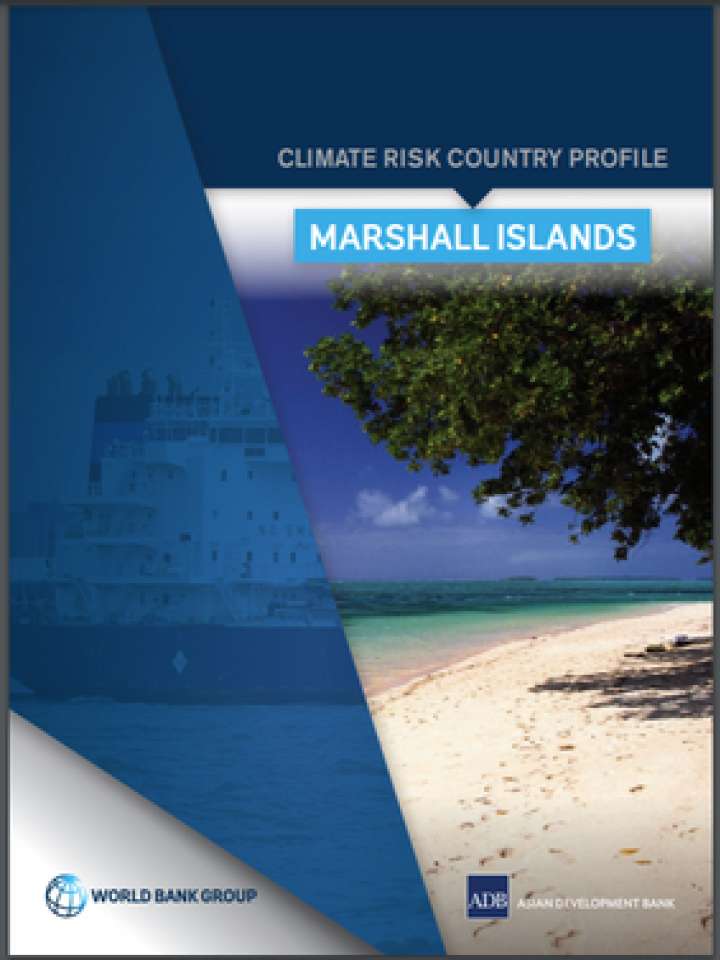Climate risk country profile: Marshall Islands
This profile is intended to serve as public goods to facilitate upstream country diagnostics, policy dialogue, and strategic planning by providing comprehensive overviews of trends and projected changes in key climate parameters, sector-specific implications, relevant policies and programs, adaptation priorities and opportunities for further actions. As part of the larger island grouping of Micronesia, the Republic of the Marshall Islands (RMI) consists of two groups of atolls and islands in the Central North Pacific Ocean about 3,200 kilometres (km) away from both Honolulu and Tokyo. In addition to this dependence on external assistance, the RMI faces a variety of social vulnerabilities, much like many other small island developing states (SIDS).The Marshall Islands face a high risk of cyclones, and the low-lying islands are susceptible to coastal floods and tsunamis.Extreme heat and drought conditions have also recently affected the islands.
This climate risk assessment report provides a number of key messages on the climate risk future of the Marshall Islands, including:
- The Republic of the Marshall Islands’ (RMI) island groups have experienced warming of around 0.6°C since 1980.
- Future trends in warming are obscured by the inability of climate models to accurately simulate trends at sufficiently small spatial scales. Warming is likely to take place at a rate slightly lower than the global average. On the highest emissions pathway (RCP8.5) warming of around 2.8°C is projected by the end of the century.
- Potential threats to human well-being and natural ecosystems include increased prevalence of heatwave, intensified cyclones, saline intrusion, wave-driven flooding, and permanent inundation.
- RMI’s population already lives in a dynamic ecosystem, to which it has adapted, but climate change is likely to increase its variability, pose new threats, and place stress on livelihoods.
Explore further
